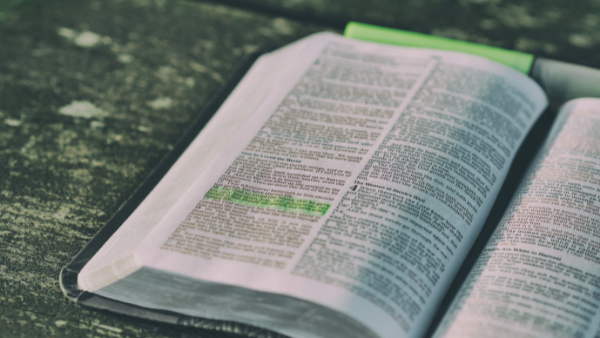By James R. Strange, Ph.D.
Professor of Biblical and Religious studies, Samford University
WORSHIPING GOD
Psalm 34:1–3; 8–10; 15–18
Despite its brevity, this individual psalm of praise has important features. For example, it is an acrostic, which means the first letter of every line follows the order of the Hebrew alphabet. The heading refers to 1 Samuel 21.
The psalm has two divisions. In verses 1–11, the psalmist uses an experience of divine deliverance to invite others to praise God’s goodness, whereas in verses 12–23, the psalmist speaks like a sage of the Book of Proverbs. By reciting the psalm, therefore, worshipers both praise God and teach one another about God.
Synagogue congregations today recite verse 3 when the Torah scroll is removed from its cabinet.
Pay attention to the many references to parts of the body and associated actions: The psalmist’s mouth praises God (v. 1); the faces of those who seek the Lord are radiant (v. 5), and their tongues and lips refrain from speaking evil (v. 13); God’s eyes see the righteous, and His ears hear their cries (v. 15); God protects the bones of the righteous (v. 20).
We meet together to praise God. (1–3)
Even though the psalmist uses hyperbole, the call to bless the Lord “at all times” and to praise Him “always” encourages God’s people in times of darkness and despair. Believers can praise God even when circumstances make it difficult to do so.
This point is emphasized in verse 2 where, against expectations, the humble (who depend on God for their survival) are called to “be glad” and to “exalt His name” together with the psalmist. The implication is that the psalmist also has learned how to praise God while suffering (v. 6).
Those who praise God at all times contrast with the “young lions” of verse 10. (See below.)
We meet together to thank God for the good things He has provided. (8–10)
To “taste and see that the Lord is good” might look like a mixed metaphor, but the psalmist is emphasizing the readers’ varied experiences of God’s goodness.
Fear of the Lord (vv. 7, 9, 11) is not terror that causes a person to flee God, but awe that leads a person to take refuge in God and to obey Him. Similarly, to take refuge is not to hide but to live righteously while surrounded by God’s protection (vv. 7, 8, 22). We see this in the admonitions of verses 11–14: “Keep your tongue from evil,” “do what is good” and “pursue [peace].”
“Young lions” symbolize the power and success of youth. Those who rely on their own strength go hungry (lacking God’s support), while those who seek help from the Lord receive it. These ideas are repeated in the Gospels.
We meet together to pray and seek God’s help. (15–18)
The evildoers of verse 16 should be understood in contrast to those who do good in verses 13 and 14. The “face of the Lord is set against” those who speak deceit, do evil and pursue discord and strife. This is a problem not only of actions but also of intent. Those who do these things are willful. They refuse the good they know to do and do the bad instead.
However, God hears the crises of the righteous and stands beside the brokenhearted and those who are crushed in spirit. Surely this is another reference to the destitute from verse 2.
Many Jewish texts talk about the poor as righteous by virtue of their poverty for, unlike the wealthy, they depend on God for everything.



Share with others: